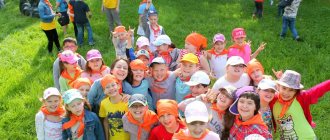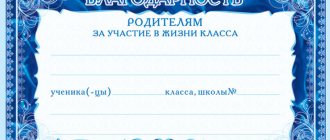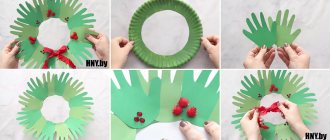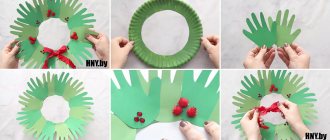Dating games for elementary school.
"Name yourself, name me"
Players are divided into two teams, which are located opposite each other at a short distance. One of the teams receives the ball. At the leader’s signal, the first player of this team throws the ball to the player of the second team, calling his name. He catches the ball and returns it to the next player of the first team, calling his name. The player standing last, having received the ball, passes it in the opposite direction, but already says his name and the name of the person to whom he throws the ball. And so on until the ball falls into the hands of the first player of the first team.
"Dating phone"
The players stand in a circle. The presenter whispers any name to the player standing on the left. This name goes down the chain until everyone knows it. After this, the leader says: “One, two, three, run in a circle.” The players whose name has been called must run into the circle; their neighbors try to hold them back. Those who were able to run to the center of the circle talk briefly about themselves, and those who could not complete the tasks given to them by other players. This is repeated, but with new names. (develops memory and attention in children so that they remember names, because they are still unfamiliar)
"Let's get acquainted"
Children stand in a circle. The presenter begins the game with the words: “Hurry up, what’s your name, tell me...”, while throwing the ball to one of the players. He catches the ball, says his name, then he throws the ball to another player, while the words are spoken again: “What is your name, tell me...”, etc.
"Round dance of dating"
All the children, holding hands, lead a round dance with the words: “We walk and walk in circles, we want to get to know each other. Only those whose names are standing are standing... (Seryozha), Well, you and I are sitting.” After these words, the children whose name was called remain standing, while the rest crouch. Then the game continues.
"It's me"
The players stand in a circle. The presenter, standing in the center, calls two names (one female, the other male). The players whose names have been called shout: “This is Me” and change places. The presenter’s task is to take the vacant seat. The one who did not have time to take an empty seat becomes the leader. If of the two named names there is only one person among the players, then he shouts: “This is I” and remains in his place.
"Near Lukomorye there is a green oak"
Equipment: a tree with leaves attached to it. The names of the children are written on the leaves. Progress of the game: First part - the presenter tears off a sheet of paper, reads the name written on it, calls a child with this name. The called child comes out and picks the next leaf from the tree, etc. The second part of the game is the presenter distributing leaves with names to the children in disarray. Task: exchange a piece of paper with your name from the players, run up to the tree, attach the sheet, saying your name. Those who do it faster than others win.
"Hello!"
The players stand in a circle, shoulder to shoulder. The driver drives to the side of the circle and touches one of the players. The driving player and the one who was hit run in different directions along the outside of the circle. Having met, they shake hands and say “Hello!” and call their names. Then they run further, trying to take an empty place in the circle. The one who is left without a place becomes the driver.
Communication games for elementary school.
"Locomotive"
The players stand one after another. The first in the chain is a steam locomotive. His eyes are open. All other players – the “carriages” – have their eyes closed. The locomotive carries its train straight, snake-like, and with obstacles. The task of the “carriages” is to follow the “locomotive” forward without releasing their hands. The task of the “locomotive” is to walk in such a way as not to lose the trailers behind you. If the “car” is unhooked, then the train is “repaired” and moves on. ( develops the ability to cooperate with each other, the ability to overcome obstacles together)
"Mirror".
Players are divided into pairs. One player in a pair is a mirror. “Mirror” synchronously repeats all the movements of the second player in a pair. Then they change places. This is not as simple as it seems at first glance - try to keep up with the player as a mirror!
Then, when the children have mastered the option of playing in pairs, it will be possible to play this game with a group of children. Children stand in a line, and the driver is in front of them, facing the players. The leader shows the movement, and the whole group synchronously repeats this movement after him (note that the group repeats in a mirror manner, that is, if the driver raised his right hand, then the “mirror” raises his left hand).
Games for dating children and teenagers
Chairs
The guys stand on chairs arranged in a circle. The leader's command is the start to the beginning of the game. Players need to line up in alphabetical order of their names, moving from chair to chair without touching the floor with their feet.
Guess right away
The children sitting in a circle are given a ball. The first player must throw it to any player and say the initial syllable of their name. The player to whom the ball was thrown tries to guess the second syllable of the name. If the answer is correct, the player who threw the ball says his name; if the answer is incorrect, he answers “No” and waits for one of the other participants to guess his name. The game ends when all the guys' names are named.
Find the namesake
Participants in the game need to find their namesakes in order to unite with them into one group. The host gives the signal to start the game, and the guys begin to shout out their names. Victory goes to the most active and fastest.
star Rain
Each of the guys receives a paper star. They must write their name on it. After this, the presenter goes around everyone with a box in his hands. Everyone throws a star into the box and says their name out loud. After all the stars have been collected, the guys take turns pulling them out of the box. Having taken out the star, the player reads the name written on it and gives it to the owner.
Girls-boys
Girls sit in one row, and boys sit in the row opposite. The girls take turns calling the men's names. If there is a boy with that name, he gets up from his chair and talks briefly about himself. When all the boys' names have been guessed, they remember the women's names, trying to guess the names of the girls sitting opposite them.
Remember the name
Several teams are needed for the competition. The game starts with the first team, each player of which says his first and last name and briefly talks about himself. Next, the 2nd team receives cards on which the names of the participants of the 1st team are written. The task of the 2nd team is to find the owners of names among the opponents and give them cards, while calling each one by last name. For each correctly guessed first and last name, she is awarded 1 point. Then the players of the 2nd team are introduced.
Conductor
The participants of the game line up. A conductor is selected and turns his back to the rest of the players. At the conductor’s command “Let’s start the concert!” The guys take turns saying their names. When all the names in a row are called, they begin to call them in reverse order - from last to first (and so on several times). Then the conductor says “Intermission” and turns to face the players. He needs to remember the guys' names. 1 point - for each name correctly named. Next, a new conductor is chosen and the game continues.
Journalist
For the duration of the game (5 minutes), all participants become “journalists”. After they are given paper and a pen and the signal to start the game sounds, the guys begin to ask the others their first and last names, ask about their hobbies, future profession, etc. They write down the answers. The “journalists” who collected the most information win.
The players are divided into two teams. At the signal, the first players of each team run to their “base”, where there are envelopes with the names of the players of the opposing team. The “postman” reads the name on the envelope loudly, the recipient from the other team must respond with the words “It’s me!” Then the “postman” quickly runs to the addressee and hands him the letter. That's what everyone else does. The winner is the team that delivers all the letters the fastest. The organizers can mark the envelopes with short meanings of the names and give them to the participants as a souvenir at the end of the game.
Relay race
There are 2 teams participating in the competition. Before the relay starts, each of the guys comes forward and says their first and last name.
The teams each have a sheet of Whatman paper. The game consists of two stages.
Stage 1. The player runs up to the sheet and writes his last name on it, on the way back he must shout out his name. Players from each team do this in turn.
Stage 2. Teams exchange sheets. Now the task of the competition participants is to write his name opposite the opponent’s last name. The victory goes to the more accurate team.
Secret names
The guys sit in pairs: boy-girl. Before the game starts, the boys tell their names to the girls sitting opposite them, they say in a whisper. The girl from the 1st pair whispers the name of her partner to her neighbor. The other girls shouldn't hear what she says. Next, the girl from the 2nd pair gives the girl from the neighboring pair the names she knows: the boy from the 1st pair and her partner. That's what all the other girls do. The girl from the last pair must name all the boys by name in the correct order. If the boy's name is called correctly, he stands up. Then the girls and boys change roles. The victory goes to the team that correctly names the most names.
Name representation
Guys with the same names unite into groups (Dima with Dima, Olya with Olya). Each group must present its name in an original way.
Examples of tasks for the game:
- Talk about the meaning of your name;
- Draw a name emblem;
- Perform a song or recite a poem in which the name appears;
- Remember outstanding personalities with the same name;
- Come up with a bouquet of flowers whose names begin with the same letter as the name.
Dramatization of names
All children form a circle, one child stands in the middle of the circle. The presenter offers the option: “Forest!” The guys, imagining trees, raise their branches, make noise and repeat the name of the one standing in the circle: “I-van! I-wan!” The second child is represented by “sea”, the third by “road”, the fourth by “bells”, until all names are presented.
Let's brag
Children take turns “bragging” about how they are different from the rest. The presenter suggests: “Think about what kind of person you are? What can you do? What are you good at?” It is advisable not to repeat yourself in the game.
"Keep the ball"
In this game we will learn to adapt our movements to the movements of our playing partner.
Players stand in pairs and hold one common large ball. Each player holds the ball with both hands. On command, players must sit down without dropping the ball from their hands, walk around the room with it, and jump together. The main task is to act in concert and not drop the ball.
When players can hold the ball with both hands without any problems, the task becomes more complicated - the ball will need to be held with only one hand for each player in the pair.
Dating games in kindergarten, junior group
- Whose voice? – the presenter stands with his back to the children sitting in a semicircle. One of the guys must pronounce any word, for example, an object that he sees in the room. The presenter guesses who the voice belongs to.
- Whose things? - The children’s things are put in the box: toys, hairpins, gloves. Then the teacher takes out the item, and the children must name whose it is.
- Find the toy – the toy is hidden in the crib or closet. The teacher prompts: “She is in Katya’s crib,” “The toy is in Lesha’s locker.”
- How to get there - the guys scatter around the group and sit in different places. The second part of the children one by one approaches the teacher and asks: “How to get to Dima? How to get to Polina? The teacher answers: “Take three steps” or “Dima for the flower.”
- Come to us - children are divided into two teams and stand opposite each other at a distance of several meters, holding hands. One team asks the second player, for example, Kolya. He must run between the guys of the opposing team to unclasp their hands. If successful, he takes one of the players to his team, if not, he stands between these players.
"Compliments."
All players stand in a circle and take turns complimenting each other. Compliments can include mood, appearance, personal qualities and much more.
This is a very enjoyable game - try it.
"Guess"
All players sit on the carpet. One player - the driver - turns his back to everyone. The players take turns patting him on the back. The driver's task is to guess who stroked him now. Then the players change places so that everyone can play the role of leader. The game can be played not only on the carpet, but also while standing (for example, while walking).
A similar game can be played in another version - call the driver by name - you get the game “Guess who called.”
How to make introductions in a new class interesting and effective?
Start by pushing the cool magazine aside. Getting to know the class through a magazine is the most ineffective option. It is impossible to remember all the names and faces, and eye contact with the class will be lost. Getting to know the class begins with the teacher's self-presentation. You must write your last name, first name and patronymic on the board and briefly tell about yourself, using simple phrases that reveal you as a person as a basis:
My name is _______________.
When I was at school, I liked ___________________________.
I like the subject that I teach because _________________.
In my free time I am interested in _________________________.
Ask students to talk about their desk neighbors: about their hobbies, character traits, performance in your subject, or let each student talk about themselves according to your plan. Equal conditions for self-presentation will help build trust.
In order to save time, it is better to write the beginning of sentences on the board:
My name is ________________________.
My favorite school subjects are _________________________.
I like/dislike your subject because _____________________________.
In my free time I am interested in __________________________________.
Meeting someone in a new class may have another option. For example, using a questionnaire telling about the class itself. Students themselves identify unique and interesting students based on the qualities written on the board:
- The most erudite
- The most athletic
- The most responsible
- The most talkative
- The most diligent
- The most silent
- The most well-mannered
- The most literate
- The most well read
- Most musical
The list of qualities can be continued endlessly.
An introduction lesson at school can also be conducted in the form of a class hour, choosing a topic that is interesting to children, for example, “My hobbies.” Start with your hobbies. By being honest about yourself and your hobbies, you will encourage children to open up about themselves and their favorite activities. Conducting such a class hour may take two lessons, especially if the children want to bring their photographs, crafts, and certificates. Take your time; such an acquaintance will help you see in each other not only teachers and students, but also interesting, enthusiastic people.
Dating games in kindergarten, middle group
- I give a toy - the children stand in a semicircle near the teacher with a bag of toys. Each child takes out a toy in turn and says to whom he will give it: “I give the toy to Alena.”
- Pie – children work together to bake a pie. Children say the child's name, and the teacher gives him a task: sift flour, roll out dough, wash fruit, etc.
- For those who are lost , the children stand in a circle. The teacher asks them to close their eyes and takes one child behind a tree, into a gazebo, or behind him. Then the guys open their eyes and guess who is lost.
- Name the name in motion - you need to add the name movement: running Alina, playing Senya.
- Repeat - the child says his name and shows the movement. The second must repeat both the name and the movement. For example, “I am Lyuda”, curtsies, the second child says: “You are Lyuda” and repeats the curtsey.
Dating games in kindergarten, senior group
- My name - the teacher thinks of an action, for example, jump like a hare. Then he asks: “Who is our Rita?” Upon hearing his name, the child stands up and performs the movement.
- Train - the first child rides like a train. Approaches any child from the group to attach the “carriage” to himself. The signal for the hitch will be the name of the sitting child. The game ends when all the trailers are attached to the locomotive.
- Stand up, everyone - the teacher says, and the guys do: “Stand up, everyone whose name is Pavel,” “Stand up, everyone who has the letter O in their name,” etc.
- Affectionate names - the teacher asks the child to name his neighbor on the right with an affectionate version of the name: Igor - Igorek, Marina - Marishka.
- Caterpillar - children, one after another, depict a caterpillar. The “head” turns to the body and asks: “What is your name?” The first part of the “torso” answers and asks further, turning back. Until the caterpillar finds out what names it consists of, the game does not stop.
Dating games for primary schoolchildren
- Magic brush - use a pen without paste to squeeze out the child’s name on a piece of paper. Then, together with the children, shade the paper with a simple pencil so that the name appears. Ask the guys with that name to stand up.
- Kaleidoscope of names - the teacher names the letters of the alphabet. If a student's name begins with that letter, they must stand up and introduce themselves.
- Parcel - the first participant says: “Clap - the owl’s name - top - the name of the one to whom he passes the baton (parcel).”
- Groups - the teacher invites the children to join groups with classmates with the same names. Those who have a rare name are united in the “Assorted” group.
- Fun tasks - the teacher calls the names of classmates and comes up with tasks for them. For example, Zhenya and Sonya hold hands and jump, Vanya and Lera dance a polka.
Dating games for teens
- Born together - children should find out with whom they have the same or close dates of birth. Then they need to learn as much as possible about each other. At the signal, teenagers take their place and try to give a short story about their new friends.
- Symbol – assign a specific symbol to each teenager. For example, imagine that Olya is an animal. What animal is she associated with? Why? You can associate children with days of the week, products, fruits, months, lessons and so on.
- Guess the name - the presenter asks the participants to say their name so as not to say it directly. Everyone has the right to give two clues about their name, the rest guess. For example, the name is translated “chosen one” - Elena; This was the name of the hero of Pushkin’s novel – Evgeniy; my name is similar to a woman’s jewelry - Sergey (earring).
Dating games in kindergarten, preparatory group
- Hurricane - children stand in a line. The teacher asks to change those who have something in common (you can start with hair color, T-shirt color). Later names are added: let the guys with the same name or whose name begins with the letter “M” change. At the word “Hurricane” everyone runs to their original places.
- When greeting , you need to shake each other’s hands within a certain amount of time and ask for their name. Then everyone remembers the names of those with whom they greeted.
- Three words about yourself - you need to say your name and describe yourself in three words.
- Squirrel - two parallel lines are drawn on the floor, near which the guys are standing. The teacher asks that those who listen to foreign music be on the right, and those in their native language on the left. Children need to run to the appropriate line without colliding.
- I love - the teacher lists dishes or products, and the child, if he loves him, must clap his hands. This way you can identify with whom children have similar tastes.








